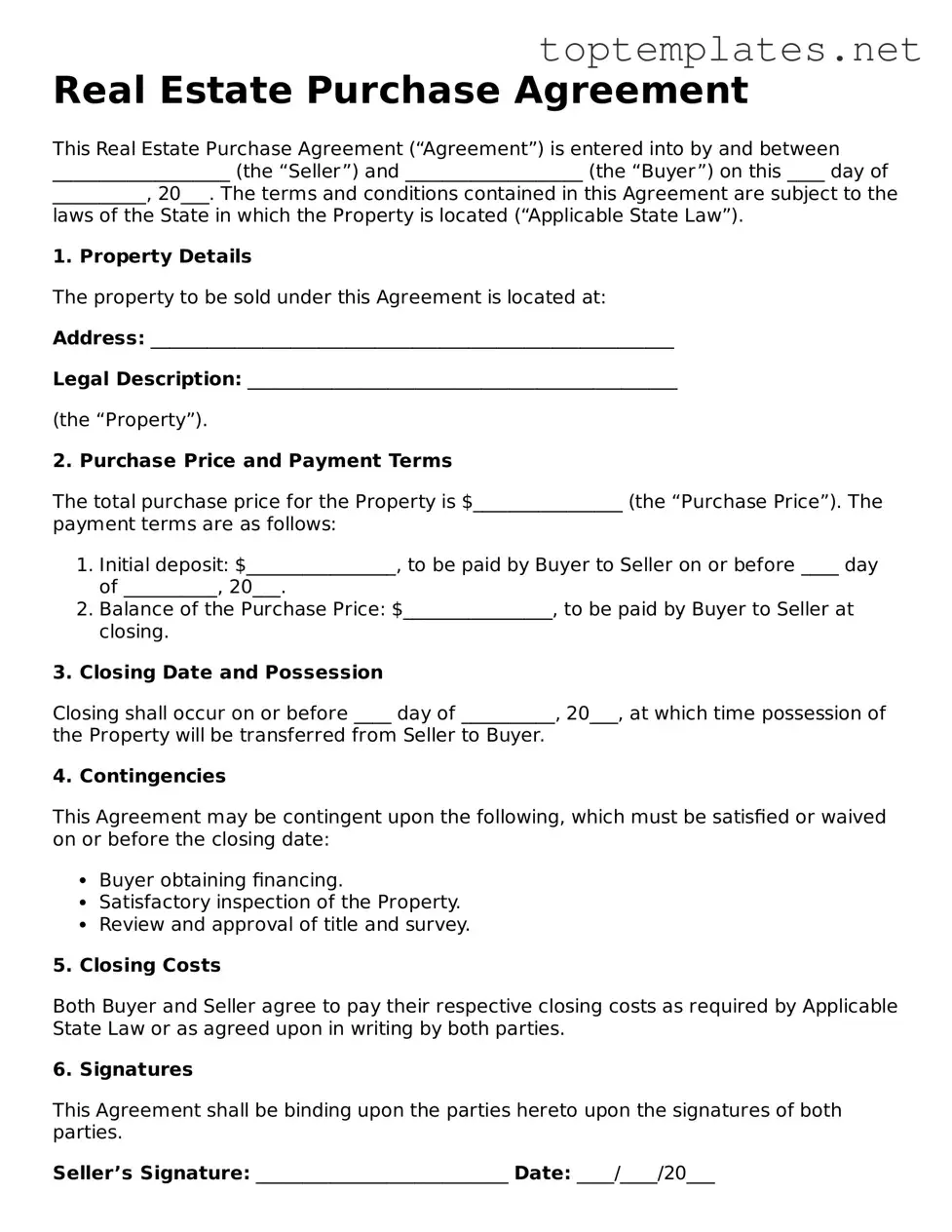What is a Real Estate Purchase Agreement?
A Real Estate Purchase Agreement is a legally binding document between a buyer and a seller outlining the terms and conditions of the sale of a property. This comprehensive document covers every aspect of the sale, including the purchase price, property description, closing details, and any contingencies that must be met before the transaction can be completed.
Why is a Real Estate Purchase Agreement important?
This agreement serves as a roadmap for the transaction, providing a clear framework for the expectations and obligations of both parties. It not only details what is being sold and for how much but also protects the interests of both the buyer and the seller, reducing the likelihood of misunderstandings and disputes. Furthermore, it ensures that the transfer of property is conducted legally and thoroughly.
What should be included in a Real Estate Purchase Agreement?
A comprehensive Real Estate Purchase Agreement should include the names of the parties involved, a detailed description of the property, the purchase price, the closing date, any contingencies such as financing or inspections, earnest money deposits, and details of who pays for what costs. It should also cover any special requirements or rights, such as seller concessions or the buyer’s right to terminate the agreement under certain conditions.
How does a contingency clause in a Real Estate Purchase Agreement work?
A contingency clause in a Real Estate Purchase Agreement sets conditions that must be met for the transaction to proceed. Common contingencies include the buyer obtaining sufficient financing, the sale of the buyer’s current home, and satisfactory property inspections. If any condition is not met, the buyer typically has the right to back out of the agreement and may recover their earnest money deposit.
Can I negotiate the terms of the Real Estate Purchase Agreement?
Absolutely. The Real Estate Purchase Agreement is not a one-size-fits-all document. Before signing, both the buyer and the seller have the right to negotiate the terms to better suit their needs and protect their interests. This negotiation phase is crucial and can cover aspects such as price, closing costs, closing date, and contingencies.
What happens if either party breaches the Real Estate Purchase Agreement?
If either party fails to comply with the terms outlined in the Real Estate Purchase Agreement, they are considered in breach of the contract. Depending on the specifics of the agreement, the non-breaching party may have various remedies, including forcing the sale (specific performance), seeking damages, or terminating the agreement and retaining or reclaiming the earnest money deposit.
How is the purchase price determined in a Real Estate Purchase Agreement?
The purchase price in a Real Estate Purchase Agreement is negotiated between the buyer and the seller. It is influenced by various factors including market conditions, the property’s condition, and comparables (recent sales of similar properties in the area). Once agreed upon, the purchase price is fixed and detailed in the agreement.
Is an earnest money deposit always required in a Real Estate Purchase Agreement?
While not always legally required, an earnest money deposit is a standard practice in real estate transactions. It serves as a good faith deposit from the buyer to show their seriousness about proceeding with the purchase. The amount is typically negotiable and is held in an escrow account until closing, at which point it is applied towards the purchase price.
What is the closing process in a Real Estate Transaction?
The closing process, which concludes the real estate transaction, involves finalizing the transfer of property ownership from the seller to the buyer. This process includes the execution of the final paperwork, payment of closing costs, and the transfer of the property title and keys. A Real Estate Purchase Agreement outlines the date by when the closing must occur and details any actions required by both parties to complete the transaction.
Can either party back out of a Real Estate Purchase Agreement?
Typically, parties can only back out of a Real Estate Purchase Agreement without penalty if certain contingencies outlined in the agreement aren’t met. Examples include failure to secure financing, or significant issues revealed during the property inspection. Outside these contingencies, backing out could constitute breach of contract, possibly resulting in financial penalties or loss of the earnest money deposit.
